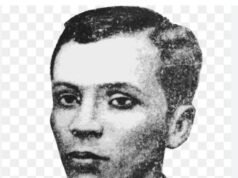Officials of the City Disaster Reduction and Risk Management Office in Cabanatuan City show the equipment and tools for disaster response capability. Some 15,000 tricycle drivers are being trained as volunteer responders for any type of disaster.
PHOTO BY ELMO ROQUE
CABANATUAN CITY – It was a real-life drama like no other that this city saw unfolding minutes after that July 16, 1990 powerful earthquake roared and struck down the six-storey Christian College of the Philippines (CCP) building here.
Trapped beneath the rubble, which was a mishmash of concrete slabs, twisted reinforcement steel bars, pieces of concrete, stones and sand, and broken wood, were more than 300 students, teachers, the school’s administrative personnel and some other persons.
“There was much wailing and cries for help by those in the rubble,” recalled George Garcia, an engineer from the city engineer’s office who was among the first persons to arrive in the disaster site recalled.
He also said a number of the victims were seen pinned lifeless by concrete materials high above the grounds. There were also agonizing howls of “Si Ma’am…Si Sir…” when some of the onlookers recognized the pinned lifeless bodies.
Those who came out, who were either injured or unscathed, but nonetheless dazed, scampered disoriented and not knowing where to go, he added. “Then the volunteer rescuers came and a few hours later, soldiers from Fort Magsaysay followed ready with some tools and equipment for the rescue operations,” Garcia said.
“We went on with the rescue operations using jack hammers, steel saws, big hammers, and our bare hands to search for and rescue the victims. Others brought the injured to the hospital,” he added. But, as Garcia further recalled, the equipment and tools used then were no match for the job and many volunteers went on searching and trying to rescue victims in the rubble using only their sheer courage.
Gripping stories, like the young boy who saved five of his classmates but on his sixth trip to the rubble to look for his girlfriend became a victim himself when he was knocked dead by a concrete slab when a relatively strong aftershock roared, became good copy for the news coverage.
Or that tale of a rescued young girl who narrated that a culprit, instead of saving her, feasted by forcing out her expensive ring from her finger. It was only when US soldiers and medical teams from Subic came, led by then Olongapo City Mayor Richard Gordon, that the complexion of the search, rescue and retrieval operations changed.
Fully equipped and knowing exactly what to do, the job of searching, rescuing, retrieving victims and the clearing of the debris were effectively done. An air-conditioned tent that served as a mini-hospital was put up on the provincial athlete grounds. All told, 133 dead victims were accounted for in the collapsed CCP building.
The many who witnessed or experienced that tragedy tried hard to forget in order to move on. But officials of the city government here did not, and “used” the lessons from that incident to “be response- ready.”
“Mayor (Julius Cesar) Vergara formed the Cabanatuan Emergency Search and Rescue Team in 2004,” said Eugene Mintu, coordinator of the City Disaster Risk Reduction and Management Office (CDRRMO) and city information officer. “He hired people, trained them and equipped them with the expertise to carry out exigencies attendant to such a big tragedy,” he added.
Then in consonance with the provisions of the Disaster Risk Reduction and Management Act of 2010, Vergara put up the CDRRMO and hired, on a permanent basis, people to be ready to respond not only to earthquake debacle but other kinds of disasters on a 24/7 basis. More importantly, he said, the mayor provided funds for the purchase of state-of-the-art equipment and tools needed for search, rescue, retrieval, and taking care of victims operations.
Named officer-in-charge of the office is Ronnie Punzal. The office is soon planned to be a regular department under the city government operational structure. The office, which is under the office of Mayor Vergara, conducts training for incident command system, integrated planning, camp management, basic life support, standard first aid, ambulance operation, water safety and boat management, water search and rescue, high angle rescue, basic fire fighting, crashed vehicle extrication and rescue, and others for any kind of disaster or tragedy.
‘We now have lifting bags that can move 85 tons of debris, hydraulic equipment, forcible entry tools, medical equipment, automated external defibrillator, scoop stretchers, spine boards, communication equipment, a number of rubber and plastic boats and ambulances, and others,” Mintu said.
The city government here has also put up a gym-type evacuation center near the city hall and a building for the permanent office of the members of CDRRM council. Ambulance-type vehicles for each of the 89 barangays here were also purchased and distributed for mobility in case of emergencies.
“We are training our more than 15,000 tricycle drivers here to become assets for search and rescue operations,” Mintu said. “They will also be trained for giving first aid to the victims, including CPR (cardio-pulmonary resuscitation),” he added.




